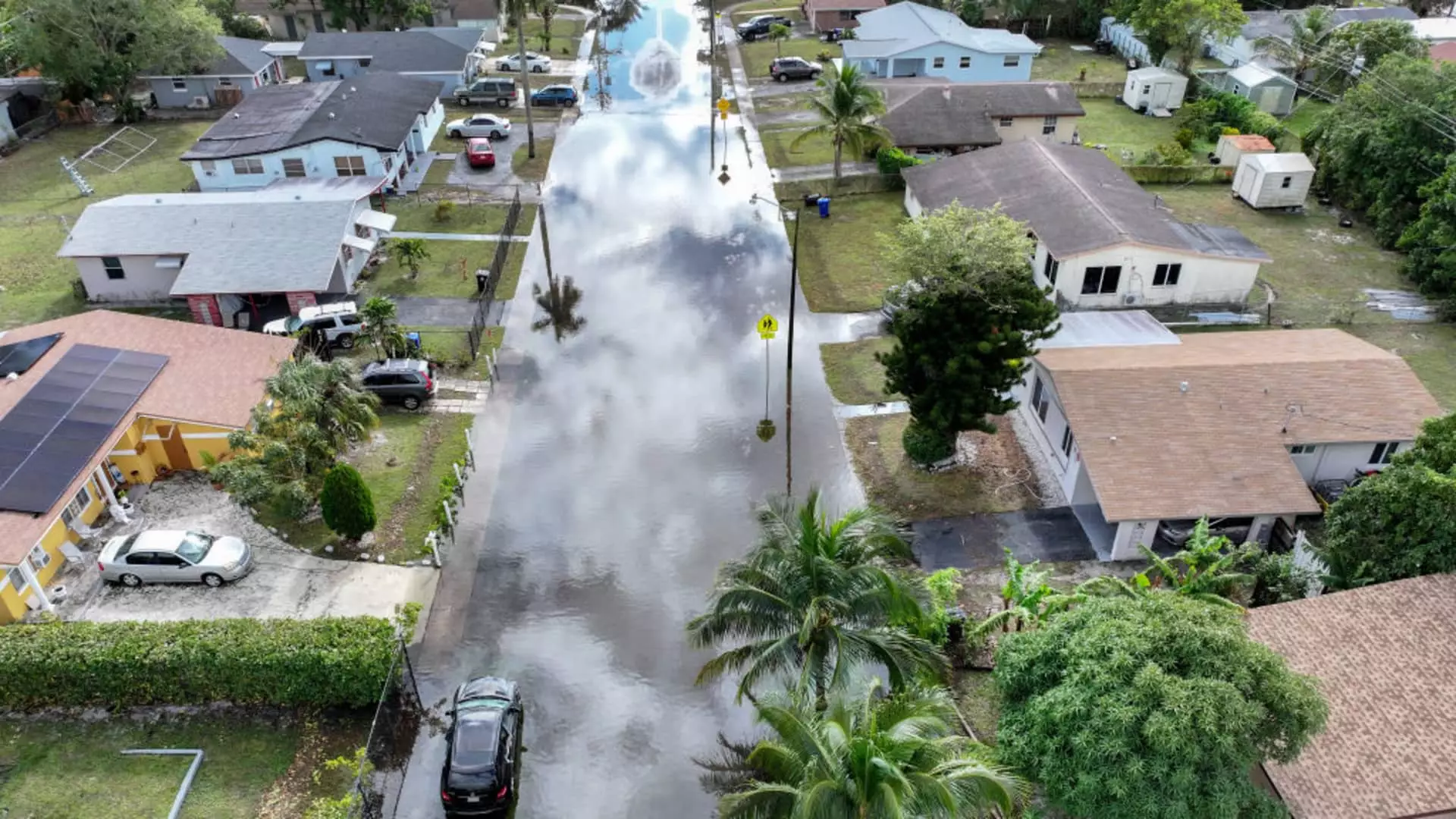As we edge deeper into an era marked by unprecedented climate volatility, the implications for household finances and mortgage lending are spiraling into acute distress. Climate change isn’t merely a future concern—it’s already disrupting economic foundations, particularly in the housing market. In fact, the intersection of climate risk and lending is a ticking time bomb that threatens to undermine the very fabric of homeownership, pushing lenders to reassess traditional metrics of credit-worthiness.
Reassessing Risk: The Emergence of Climate Factors
For decades, mortgage lenders have relied predominantly on credit scores, debt-to-income ratios, and collateral. However, a seismic shift is underway, as documented in an eye-opening report from First Street, a climate risk assessment firm. This report highlights the alarming ways in which climate disasters—ranging from ferocious wildfires to relentless flooding—are not just natural disasters but financial liabilities that demand urgent attention from lenders. The situation is not hypothetical; it’s an evolving reality that lenders can no longer afford to ignore.
According to First Street, projected annualized climate-related foreclosures could generate around $1.21 billion in losses for banks this year alone. If we extrapolate this trend, just a decade from now, this figure could soar to a staggering $5.36 billion—representing nearly 30% of all foreclosure losses. This paradigm shift begs the question: Are lenders equipped to handle the volatility embedded within these climate metrics? The traditional frameworks of risk assessment, which conveniently exclude the financial consequences of climate change, will soon be tested to their breaking point.
The Disruption of Traditional Valuation and Underwriting Models
The implications of climate risk for mortgage underwriting are profound. Jeremy Porter, head of climate implications at First Street, noted that mortgage markets have now become the frontline battleground against climate change. The outdated assumptions that underpin loan underwriting and property valuation are facing erosion from forces beyond their control. For instance, when a property experiences flooding, not only does the probability of foreclosure skyrocket by an average of 40%, but the broader ramifications for lenders are also severe.
High-risk areas, especially coastal states like Florida and Louisiana, have witnessed insurance premiums ballooning due to climate-related disasters. The burden of these heightened costs often forces homeowners to abandon their properties, placing significant financial strain on lenders, who are increasingly finding themselves on the hook for unrecoverable debts. Yet, rather than integrating future climate risks into their financial models, many lenders are operating as if everything will remain business as usual, a mentality that is not only outdated but reckless.
The Role of Government and Systemic Failures
Compounding these challenges is a chaotic federal landscape where institutions meant to mitigate risks, such as FEMA, are in disarray. Budget cuts and staff reductions during the Trump administration exemplify a troubling retreat from proactive governance in disaster management, further amplifying the uncertainty for both lenders and consumers. The inability of government agencies to provide adequate support in terms of disaster relief heightens the stakes for mortgage lenders, like Fannie Mae, who are currently lagging in their efforts to adapt to the mounting climate crisis.
Moreover, as outlined in the First Street report, the spiraling costs of climate-related disasters—rising by an alarming 1,580% over the past four decades—are intricately tied to factors that extend beyond mere natural disasters, including inflation and real estate development in high-risk regions. It raises the distinct possibility that a failure to adapt could lead to massive credit loss across the mortgage market.
Shifting the Burden: A Call for Action in the Financial Sector
Given the chilling evidence, the onus lies heavily on the financial sector to recalibrate its approach to risk assessment. Ignoring climate risks doesn’t just leave consumers vulnerable; it amplifies systemic risks that could topple financial institutions. The rising tide of climate-related foreclosures isn’t merely a piece of statistics; it’s a clarion call for lenders to take action and reflect the realities of our changing climate in their underwriting models.
The urgency is clear: lenders must integrate climate-based assessments into their frameworks, weighing risks linked to natural disasters and systemic vulnerabilities. By doing so, they can potentially mitigate the economic fallout from climate change while safeguarding their own interests and supporting consumers who find themselves increasingly besieged by the financial implications of a warming planet.
In this fractured landscape where climate change intersects with economic policy, it becomes vital to understand that adapting to these realities isn’t just a matter of corporate social responsibility; it’s an economic imperative. To ignore it is to court disaster—not just in terms of consumer hardship but in the integrity and stability of the entire mortgage lending ecosystem.

